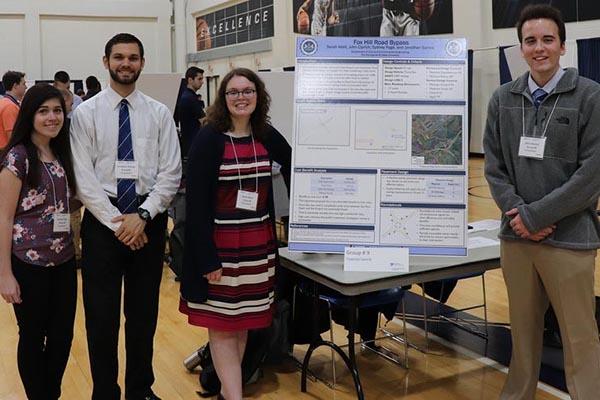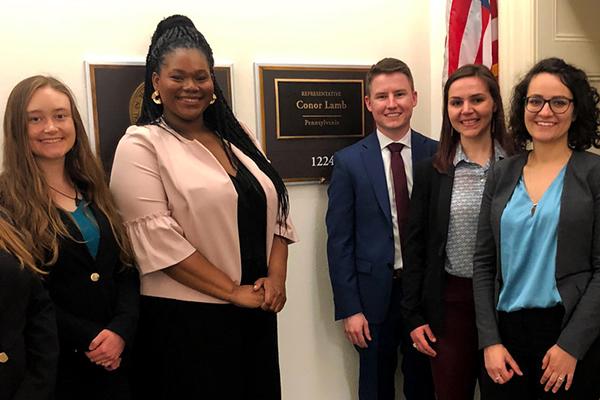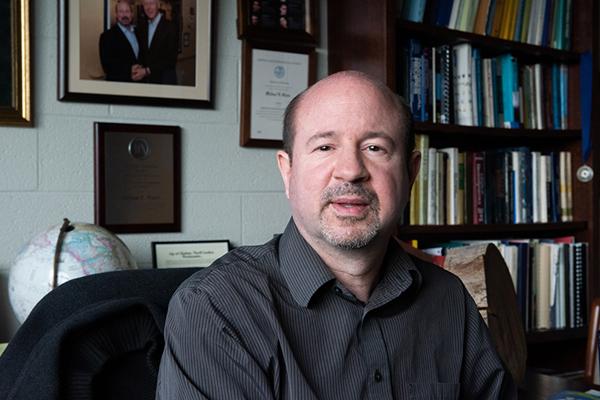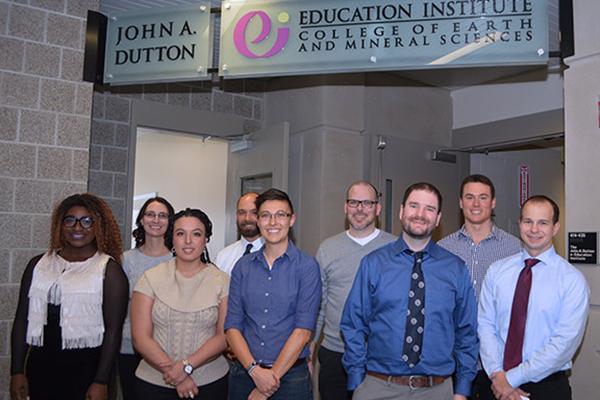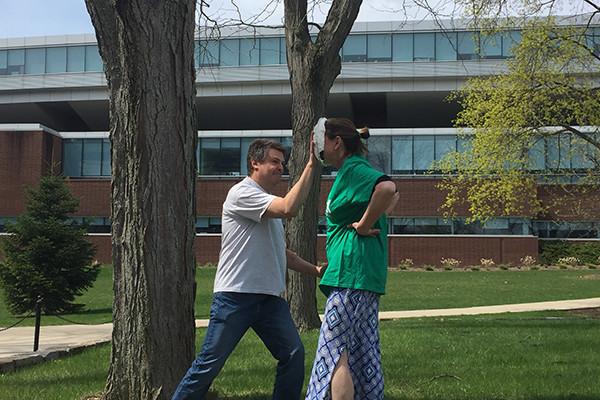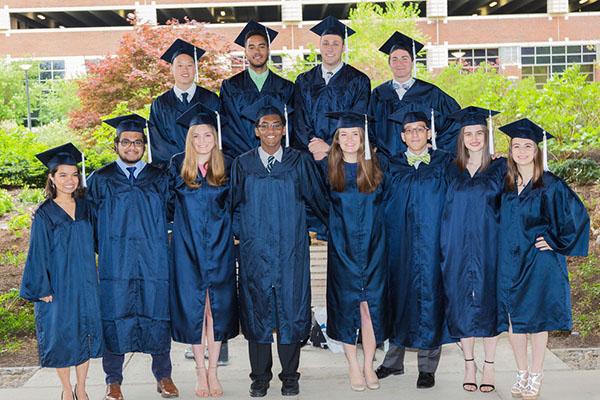Students, including two teams advised by Allen Kimel, associate teaching professor of materials science and engineering, displayed their capstone design projects at the College of Engineering's spring 2019 Capstone Design Project Showcase.
Members of the Penn State Science Policy Societyrecently visited Washington, D.C., where they met with officials from several congressional offices and nongovernmental organizations to discuss the promotion of science and evidence-based policy.
Michael Mann, distinguished professor of atmospheric science and director of the Earth System Science Center at Penn State, received the 2019 Praxis Award in Professional Ethics during a ceremony at Villanova University on April 11.
Federally sponsored science plays a more significant role in bringing together stakeholders and facilitating environmental governance debates than all other types of research, according to an international team of researchers.
Kelvin K. Droegemeier, director of the White House Office of Science and Technology Policy (OSTP) will deliver the 2019 spring commencement address for the College of Earth and Mineral Sciences (EMS) undergraduate graduation ceremony.
Here is something to think about: Some of Penn State’s current Department of Geography students weren’t even born when Online Geospatial Education at Penn State offered its first class.
Penn State student Kristina Salvatore spends much of her time thinking about weather events, including severe storms that impact people around the world. After hurricane season this year, Salvatore, a senior in the Department of Meteorology and Atmospheric Science, wondered what she could do to help those affected by these storms.
When Penn State student Ana Isabel de la Fuente Duran’s fellowship led her to tackle materials science research problems at another university last summer, she stumbled upon an entirely different problem to solve.
Jeremy Gernand, Penn State assistant professor of environmental health and safety engineering in the John and Willie Leone Family Department of Energy and Mineral Engineering, recently received a Gladys Snyder Education Grant from the College of Earth and Mineral Sciences to develop a computer-based simulator to give undergraduate engineering students experience with the risk-related implications of system design decisions.
With the goal of preparing scholars from underrepresented groups to succeed in graduate and professional programs, Penn State, the University of North Carolina at Chapel Hill (UNC) and the University of Maryland, Baltimore County (UMBC) partnered to develop undergraduate programs aimed at increasing retention and academic performance of historically racially underrepresented undergraduates in science, technology, engineering and mathematics (STEM) fields.


